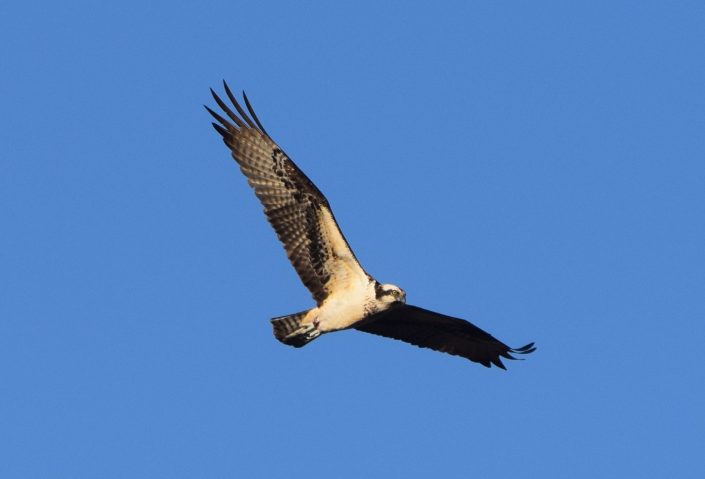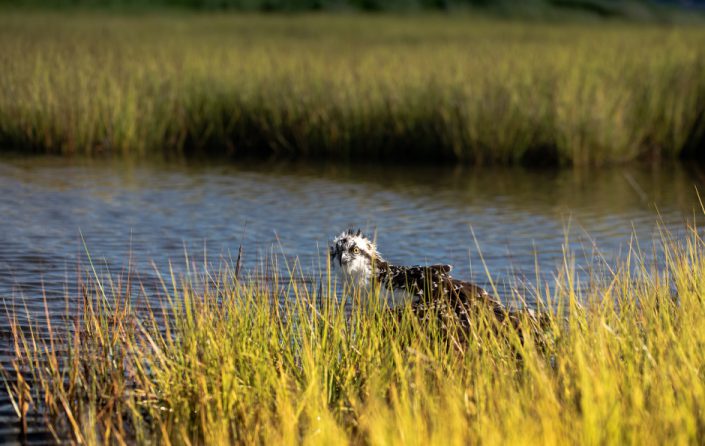Red Banded Osprey from Long Beach Island Rescued in Trinidad!
Continue reading “Red Banded Osprey from Long Beach Island Rescued in Trinidad!”
Continue reading “Red Banded Osprey from Long Beach Island Rescued in Trinidad!”
I never imagined the rewarding experience of observing adult ospreys that I banded as nestlings. Over the past decade, I have banded six hundred and twelve ospreys with field readable red auxiliary bands. These birds originated from nests throughout the Barnegat Bay watershed, from Point Pleasant to Little Egg Harbor. This year, 29 red banded ospreys were re-sighted along the coast of New Jersey.
Continue reading “Photos From the Field”
by Ben Wurst, Senior Wildlife Biologist

For the past two summers, Victoria Rosikiewicz has worked for Conserve Wildlife Foundation of New Jersey at the Long Beach Island Foundation (LBIF) of Arts and Sciences. LBIF is a non-profit organization whose mission is to “promote the arts and sciences on Long Beach Island and the surrounding communities by enlightening, educating, and stimulating thought and discussion about current trends in the arts and sciences through educational and cultural programs for all ages.” We began working with LBIF in 2015 to help encourage ospreys to utilize a nest platform on their 20 acre preserved saltmarsh. Over the years, our relationship has grown and we have worked to improve science based programming and environmental features on site. From enhancing their Nature Trail and installing the live streaming LBIF Marsh Cam, building the Osprey Blind, and creating terrapin nesting habitat. Victoria has helped to expand environmental education through leading LBIF’s Discovery Days public walks, CWF’s wildlife summer camp, and conducting wildlife surveys. This work has been funded through a grant from the Osprey Foundation.
Continue reading “Enhancing the Sciences at LBIF”
By Amy Kopec
CWF Beach Nesting Bird Field Technician
People usually go to the beach looking for something; whether it’s shells, sea glass, or just some relaxation and better tan lines. I too am searching for something when I walk Holgate, a three and a half mile stretch of National Wildlife Refuge beach on the south end of New Jersey’s Long Beach Island. And while I do end up with a tan and some old glass bottles, that’s not really what I’m there for. What I’m actually looking for can be quite a bit harder to find.

Although estimates are hard to come by, a recent NPR segment claimed there are only about 8,000 Piping Plovers left in the world. As a designated endangered species, these beach nesting birds are given certain legal protections, and the states they are found in receive funding for research and conservation. These studies are where I come in. Over the last three summers, I have worked in two different states (Massachusetts and New Jersey) monitoring and studying Piping Plovers as they nest. These little birds are up against a lot of challenges during their breeding season–from habitat loss to flooding to predation. There is no easy solution for the recovery of this species. The variable nature of beaches from one season to the next means these birds have to be carefully monitored. And each year I seem to encounter something new while I’m searching the beach.
Continue reading “Beachcombing for Plovers”by Ethan Gilardi, Wildlife Biologist

The expansion of Eastern Coyotes (Canis latrans x lycaon) throughout the northeastern United States has been a cause for alarm in some communities, but are they as dangerous as some fear?
A particularly adaptable wild canid, the eastern coyote is distinct from their western cousins and is considered to be a hybrid species, created when western coyotes and other wolf species, like the eastern wolf, interbred in the early 1900s. This new larger coyote species has been able to expand its territory out from its central/western roots and can now be found along much of the eastern coast of the United States.
The eastern coyote’s presence on our coasts now finds itself at odds with the humans who call these more cosmopolitan coastal areas their home, like on Long Beach Island where increasing coyote sightings over the past few years are beginning to worry residents.
Monique M. Demopoulos of TheSandpaper.net reached out to Conserve Wildlife New Jersey for a conservationist’s perspective.
CWF Habitat Program Manager Ben Wurst and Executive Director David Wheeler gave their thoughts in the article published on March 11th.
Reading read the full story over on TheSandpaper.net!

Want to learn more about eastern coyotes and their ecology here in New Jersey?
Watch David Wheeler’s Living with Eastern Coyotes: The Incredible Story of our Newest Wild Neighbors over on the CWF YouTube channel!
by Ben Wurst, Habitat Program Manager
When we were contacted to be a part of this LBI centered documentary series, we knew that we couldn’t pass up the opportunity to share some of our work with coastal raptors, like the osprey and peregrine falcon, and their importance in the local environment and economy. In this video you’ll see us banding “Junior,” who hatched at the Jersey City Falcon Cam this spring, but was removed from his nest after being examined and found to be malnourished. We was fostered into the falcon nest at Sedge Island. You’ll also see video of ospreys on their nest at sites surrounding Long Beach Island, and interviews with my friend, and CWF supporter, Northside Jim, and Kathy Clark, ENSP Supervisory Zoologist. Continue reading “Just Beneath the Surface: Junior’s 5 Seconds of Fame”
by Ben Wurst, Habitat Program Manager

North American ospreys migrate long distances to and from their breeding and wintering grounds in the southern U.S., Central America, Caribbean Islands, and N. South America. For the past four years we have been banding young ospreys who originate from nests on Barnegat Bay with an auxiliary band to help determine their movements after fledging. Project RedBand was designed to help track the migration, dispersal, life span, and foraging habits of ospreys from Barnegat Bay, a unique estuary along the Atlantic Coast of New Jersey. The project was also designed to help engage the public in osprey management and conservation. Since the red bands are highly visible and readable with optics, it allows the public the ability to identify the individual and then learn about their past. Lastly, we now rely heavily on citizen scientists who report nesting activity on Osprey Watch. Continue reading “Osprey 04/D Back in Jersey!”
by Ben Wurst, Habitat Program Manager
We were subcontracted by NJDOT to install a new nesting tower for peregrine falcons in Stafford Twp., Ocean County. We’ve assisted NJ Fish & Wildlife with monitoring the falcon nest that was previously located beneath the Route 72 Causeway Bridge for the past several years. The new tower is located on Bonnet Island and highly visible on the eastbound side of Route 72. Continue reading “Photos From the Field: Bonnet Island Falcon Tower”
by Ben Wurst, Habitat Program Manager

I thought long and hard about sharing this news, hence the delay in this post. In late October, we received news that a young osprey I banded this summer was re-sighted. It turns out that this bird was not your average young osprey, out of the 892 produced this year. This young bird hatched at a nest behind the Long Beach Island Foundation of the Arts & Sciences, around June 11th, a nest referred to as home to “LBI’s Most Famous Osprey Couple, Jack & Wendy.” He was banded, along with his nestlings, on July 5th. He was tagged with a red auxiliary “field readable” band: 78/D, as part of Project RedBand, which allows fellow biologists and citizen scientists the ability to identify the bird while still alive (most osprey band reports occur during mortality based events). At the time of banding, he was also given the name Chump, by Northside Jim.
A few weeks after being banded, a local resident reported a bird in distress (on the ground) at LBIF and I contacted Jim to see if he could respond. Long story short, he did and Chump was rehabbed within six weeks at Toms River Avian Care (on August 30th). After being released, we watched Chump make a strong flight around the marsh at LBIF until he flew off into the distance. We could only hope that he was strong enough to survive on his own, since he was too old for his parents to accept him back where he hatched. Continue reading “The Fate of Chump: Osprey 78/D”
by Ben Wurst, Habitat Program Manager

On Sunday, July 30th I woke and checked my email early that morning. I had an urgent message from Deb Traster, who lives adjacent to the Long Beach Island Foundation of the Arts & Sciences (LBIF). She said that something was not right with one of the young ospreys that fledged from a nearby nesting platform where I banded three nestlings with red bands on July 5. One was on the ground and could not take off. Fearing the worst (entanglement), she checked it out and sought help. After getting in touch with me, I reached out to my buddy, Northside Jim to see if he could get there that morning. Continue reading “Osprey 78/D: A Second Chance”